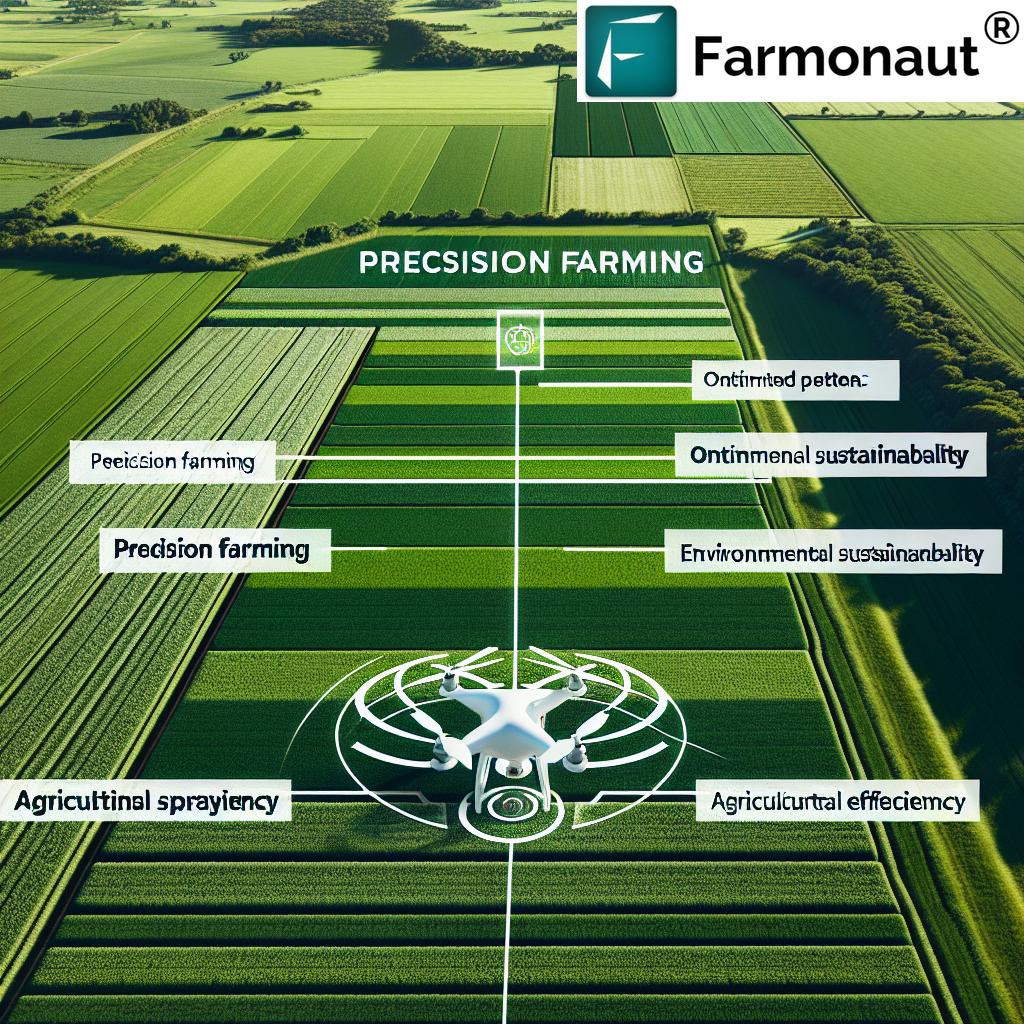Alabama Farm and Livestock: Farm Loans & Ag Facts—A 2025 Overview
“In 2025, Alabama farmers secured over $1.2 billion in farm loans, fueling rural economic growth across the state.”
Introduction: The Cornerstone of Alabama’s Rural Economy
Alabama’s agricultural sector remains a defining force in its economy and cultural heritage as we look into 2025. Alabama farms and livestock operations continue to shape rural communities and drive economic growth, employing thousands and upholding traditions passed down across generations.
With diverse output ranging from poultry and cattle to soybeans, peanuts, cotton, and vegetables, Alabama’s agricultural landscape is both a cornerstone for local consumption and a crucial contributor to export markets. The state’s unique geography—favoring a temperate climate and abundant rainfall—coupled with a population that is growing and evolving, demands a keen understanding of the dynamics shaping 2025 and beyond.
This blog comprehensively explores:
- The latest Alabama agriculture facts, production trends, and market insights
- How technology adoption and precision tools are revolutionizing farm productivity
- The evolving farm loan landscape, financing options, and their economic impact
- Challenges and innovations in livestock management and animal welfare
- The role of satellite-driven solutions like Farmonaut for smarter, more sustainable Alabama farming
Alabama Agriculture Facts & Trends for 2025
To truly appreciate Alabama’s agricultural success story, let’s look at some essential Alabama agriculture facts and trends shaping the state’s rural economy in 2025:
- Production Powerhouse: Alabama continues to rank among the top states nationally for poultry production—especially broiler chickens—which generate billions in revenue annually. Beef cattle forms the largest segment of livestock production, with thousands of farms spread across Alabama’s 67 counties.
- Diversification: Alabama farmers produce substantial quantities of soybeans, cotton, peanuts, corn, and vegetables, feeding both local populations and supporting lucrative export markets.
- Climate Advantage: The state’s temperate climate and abundant rainfall offer a natural benefit to farming operations, boosting yields and permitting a wider variety of crops.
- Economic Engine: Farm and livestock management contribute over $75 billion annually to Alabama’s economy, supporting thousands of jobs and sustaining countless communities beyond direct producers.
- Technology Transformation: In line with 2025 trends, there is an increasing rate of advanced technology adoption among Alabama’s agricultural producers, resulting in improved productivity and more sustainable practices.
Comparative Trends Table: Alabama’s Key Agricultural Segments in 2025
| Agricultural Segment | Estimated 2025 Production Value | Key Technology Adoption Rate | Average Farm Loan Amount | Economic Impact (% State GDP) |
|---|---|---|---|---|
| Poultry (Broiler Chickens & Eggs) | $4.5 billion | 65% (Precision Monitoring, Automation, Satellite Data) | $550,000 | 19% |
| Beef Cattle | $2.3 billion | 52% (Genetics, Feed Optimization, Health Sensors) | $475,000 | 8% |
| Soybeans & Row Crops | $1.25 billion | 59% (Drones, Satellite Imagery, Variable Rate Tech) | $420,000 | 6% |
| Cotton | $850 million | 44% (Precision Irrigation, Robotics) | $390,000 | 4% |
| Specialty Crops (Peanuts, Vegetables) | $610 million | 48% (Greenhouses, Sensor Tech) | $330,000 | 2.8% |
*Data based on 2025 estimates and industry trends, illustrating production value, technology adoption, lending, and GDP impact for key agricultural categories in Alabama.
The Digital Shift: Adoption of Advanced Technology in Alabama Farm and Livestock
One notable trend driving Alabama farm and livestock growth in 2025 is the rapid adoption of advanced technology—a transformation that is setting new benchmarks for productivity, environmental impact, and sustainability. Here is how modern tools are revolutionizing farming operations across the state:
- Precision Agriculture: The use of drones, soil sensors, and AI-driven platforms allows producers to monitor soil health, manage crop inputs, and optimize yields down to individual field sections. This targeted approach reduces waste and supports environmental stewardship.
- Satellite Imagery & Data: Real-time imagery from satellites delivers actionable insights into vegetation health, moisture levels, and disease risk, empowering farmers to make informed decisions and adapt their management practices quickly.
- Smart Machinery: Tractors and harvesters equipped with IoT sensors and GPS guidance systems have become mainstream on many Alabama farms, improving efficiency, reducing labor needs, and lowering costs per acre.
- Sustainable Farming: There is growing interest in diversified systems like agroforestry and integrated livestock-crop farms, leveraging natural synergies to strengthen resilience, ecological sustainability, and reduce environmental impact.
- Climate Smart Solutions: Given the increased climate variability, Alabama producers are adopting digital tools for weather forecasting, carbon footprint tracking, and risk management to adapt and thrive.
Why are these trends significant for Alabama?
The result is an agricultural sector that is more profitable, more competitive, and better equipped to deal with contemporary challenges—from environmental variability to rising input costs and evolving market demands.
By the numbers: Nearly 48% of Alabama farms have integrated advanced agri-tech by 2025, a leap that places the state at the forefront of the digital farming revolution.
Farmonaut Tech for Alabama Farmers
We at Farmonaut provide affordable access to satellite-driven solutions for Alabama farmers, empowering them to optimize crop management, monitor vegetation health, and adopt sustainable farming practices. Our platform leverages satellite imagery, AI-driven advisory, blockchain-based traceability, and resource management tools—all designed to elevate Alabama farms into the next era of smart agriculture. Explore our App for insightful crop & forest advisory or click below to try our web application:
Livestock Management in Alabama: Challenges & Innovations
Livestock production remains central to the Alabama farm and livestock economy. Beef cattle and broiler chickens dominate, but the road ahead is shaped by both opportunity and considerable challenges:
Key Challenges Facing Alabama Livestock Producers in 2025
- Disease Management: With herds and flocks growing, the need for advanced detection and control systems is critical to prevent and contain disease outbreaks.
- Fluctuating Feed Costs: Global and local market volatility affects the cost of feed, requiring better financial planning and resource optimization.
- Environmental & Animal Welfare: The demand for sustainable practices and higher animal welfare standards is rising, both from consumers and regulatory frameworks.
- Climate Change Effects: Droughts, floods, and temperature anomalies all place added pressure on livestock management systems.
Innovations Powering Alabama Livestock Management
- Smart Health Systems: The integration of wearable health sensors, AI-driven breeding algorithms, and nutrition management tools empowers producers to maximize herd health and monitor productivity in real-time.
- Satellite & Remote Sensing: Utilizing platforms like Farmonaut’s environmental monitoring technology, Alabama producers can monitor pasture quality, forecast weather threats, and adhere to environmental compliance with greater accuracy.
- Extension Services: Land grant universities and extension programs provide the latest guidance on disease prevention, genetic selection, and resource management across Alabama’s 67 counties.
- Blockchain-Based Traceability: Ensuring secure, transparent product pathways from farm-to-table increases consumer trust and marketability.
Leverage More from Satellite & Blockchain with Farmonaut
Our traceability tools (Traceability solution benefits) and environmental impact tracking for livestock and crops can help Alabama farmers demonstrate sustainability to buyers, boost operational transparency, and ensure compliance, all while maintaining profitability.
Farm Loans in Alabama: Fueling Sector Growth in 2025
Access to capital remains essential for Alabama’s farmers and producers, whether they are upgrading equipment, expanding acreage, recovering from weather events, or investing in new technology. In 2025, the landscape of farm loans in Alabama is more varied, accessible, and responsive to modern needs than ever.
Main Farm Loan Types & Sources in Alabama:
- USDA Farm Service Agency Loans: Federal programs offer low interest rates, flexible repayment terms, and disaster relief, serving new and established farmers alike.
- Commercial Agricultural Lenders: Local banks and private lenders in Alabama are offering tailored loans for expansion, equipment financing, and operational costs.
- Beginning and Minority Farmer Programs: In 2025, increased efforts are underway to ensure access for underserved communities, enhancing diversity and opportunity within the Alabama agricultural sector.
- Innovative Verification & Insurance: Financial institutions can now use technology like Farmonaut’s satellite-based verification systems to streamline loan approval and reduce fraud, giving farmers faster, more secure financing options.
Key Benefits for Alabama Farmers in 2025:
- Low and competitive interest rates designed to match market realities
- Customized programs catering to small, mid-sized, and specialty producers
- Access to disaster relief funding in the face of unpredictable climate and environmental fluctuations
- Educational programs in financial literacy, farm management, and investment planning
- Support for sustainable practices and tech adoption via green financing products
Did you know? In 2025, more than $1.2 billion in farm loans in Alabama were provided to support everything from infrastructure upgrades to innovative agri-tech integration, expanding rural economic opportunity at every step.
Farmonaut’s solutions work with financial institutions to provide satellite-based verification that streamlines crop loan approvals and insurance, reduces risk for lenders, and ensures that investment in Alabama’s agricultural sector remains robust. Our crop loan and insurance solutions offer banks and farmers smarter, faster ways to manage lending and claim verification in real time.
API Integration for Alabama Agricultural Businesses
Alabama’s agri-enterprises and lenders can leverage our satellite API for integrating advanced monitoring directly into their own systems. This enables scalable, accurate, and automated farm and livestock verification, benefiting everything from lending to insurance, large-scale operations management, and supply chain traceability.
Get started with the Farmonaut API for Alabama agriculture.
Read our Developer Docs for seamless integration.
“By 2025, 48% of Alabama farms adopted advanced agri-tech, marking a significant shift in statewide agriculture practices.”
Economic & Community Impact: Alabama Agriculture Beyond the Farm
The impact of Alabama farm and livestock operations extends well beyond the fields and pastures. Here’s why:
- Job Creation: More than 500,000 jobs are directly and indirectly supported by Alabama’s agriculture and related industries.
- Community Health: Local food systems, markets, and agritourism enterprises connect urban dwellers with their rural heritage and support regional wellness and nutrition initiatives.
- Infrastructure Upgrades: Ongoing investment in rural broadband, roads, and storage systems expands market access for producers, reduces waste, and makes Alabama farms more competitive, both nationally and globally.
- Environmental Stewardship: Emphasis on sustainable practices, carbon tracking, and adaptive management has positioned Alabama as a leader in environmental responsibility among Southern agricultural states.
- Educational Growth: Partnerships with land grant institutions, extension services, and ag-tech platforms like Farmonaut foster knowledge-sharing, innovation, and a workforce prepared for the next generation of agricultural opportunities.
Farmonaut: Satellite Innovation Empowering Alabama Farm and Livestock Management
As digital transformation accelerates across the agricultural landscape, our commitment at Farmonaut is to empower Alabama farmers and agri-businesses with satellite-powered insights and AI advisories that foster resilience, sustainability, and profitability.
Our Core Technologies Benefiting Alabama:
- Satellite-Based Monitoring: Multispectral images map crop and livestock health, soil conditions, and infrastructure integrity. With NDVI (Normalized Difference Vegetation Index) monitoring, Alabama’s agriculture can proactively manage field health and resource allocation.
- Jeevn AI Advisory System: Real-time weather, customized recommendations, and actionable intelligence to tackle disease, environmental trends, and production optimization.
- Blockchain Traceability: Secure supply chain traceability from origin to market, critical in food safety and authenticity for Alabama’s produce, poultry, and beef.
- Fleet and Resource Management: Powerful resource and fleet management systems optimize machinery and vehicle usage, reduce costs, and ensure farm operations are efficient and safe.
- Environmental Monitoring: Carbon footprint tracking and real-time assessment of environmental impact help Alabama’s agriculture meet sustainability standards and leverage green finance.
Our scalable, subscription-based platform serves smallholders to large businesses, with solutions accessible via:
- Web and mobile apps (try our app)
- Enterprise APIs for seamless integration (API access)
- Customizable monitoring, field mapping, and sustainability reporting for any land size
Affordable, Scalable, and Sustainable—That’s Our Promise for Alabama Agriculture.
Looking for large-scale farm management or plantation advisory? Our dedicated solution: Large Scale Farm Management enables agribusinesses in Alabama to optimize operations, remotely monitor fields, and scale up management with minimal overhead.
FAQ: Alabama Farm and Livestock, Loans & Ag Facts
What are the largest farm and livestock sectors in Alabama in 2025?
The poultry industry (broiler chickens and eggs) remains the largest agricultural segment, followed closely by beef cattle, soybeans, cotton, and specialty crops like peanuts and vegetables.
What challenges do Alabama livestock producers face in 2025?
Key challenges include disease management, fluctuating feed costs, the need for enhanced animal welfare practices, environmental sustainability demands, and greater climate variability.
How accessible are farm loans in Alabama in 2025?
Farm loans in Alabama are highly accessible thanks to federal programs (USDA FSA loans), state and local banks, and new verification technologies. There’s a growing focus on serving beginning and minority farmers.
What new technologies are Alabama farmers adopting most rapidly?
Advanced technologies like drones, satellite imagery, AI-driven monitoring, blockchain-based traceability, and precision machinery are being rapidly adopted to optimize productivity and reduce environmental impact.
How does Farmonaut support Alabama farm and livestock management?
We provide satellite-powered monitoring, AI advisory, blockchain traceability, fleet/resource management, and satellite-based loan verification, enabling smarter, sustainable, and scalable agricultural practices in Alabama.
How do new technologies impact the environment and sustainability in Alabama?
Technologies like precision ag, satellite data, and carbon tracking tools (Farmonaut Carbon Footprinting) help optimize input use, lower emissions, improve yields, and ensure compliance with evolving environmental standards.
Conclusion: Sustaining Alabama’s Agricultural Legacy in 2025 & Beyond
As we look ahead, Alabama’s farm and livestock sector remains a cornerstone of the state’s economic stability, food security, and rural culture. Embracing advanced technology, expanding farm loan opportunities, and prioritizing sustainable practices are the keys to ensuring continued growth and resilience for Alabama’s agricultural communities.
With unified support from public and private entities and the active participation of innovative agri-tech platforms like Farmonaut, Alabama’s farmers, ranchers, and rural communities are well-positioned to thrive—preserving their rich heritage and economic impact for generations to come.
For Alabama’s future, investment isn’t just in land and livestock—it’s in knowledge, technology, and the sustainable stewardship of resources that sustain us all.















